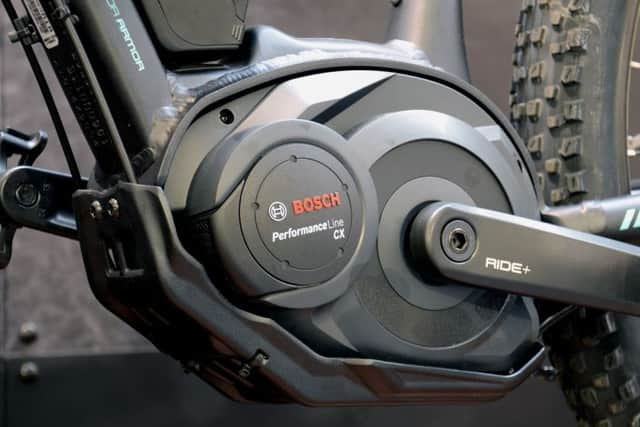Column: It's time to switch on to a new form of cycling


It’s often at about this time of year that many of us consider using our cars a bit less and cycling to work or to run errands.
In the words (well, nearly) of Oasis, they’re electric, no longer viewed as eccentric and they may just get you doing things you never expected. I’m talking about electric bikes.
Advertisement
Hide AdAdvertisement
Hide AdBefore I tried an electric bike, I’ll admit I was sceptical.


Being a long-serving traditional cyclist, something in me said that an electric bike would spoil the enjoyment. How wrong I was.
Having now given the e-bike a try, I can honestly say they’re huge fun and I’m a convert – as are thousands of others.
Electric bikes first came to Europe about a decade ago and they are becomingly increasingly popular here in the UK.
Advertisement
Hide AdAdvertisement
Hide AdEnvironmentally friendly and cost effective, they’re the ideal alternative for the modern cyclist and bring cycling within the reach of many more people than pedal power alone.


They bring the fun of being on two wheels, without the gruel of getting fit.
They can be ridden anywhere that push bikes can be ridden, they’re really easy to use and persuade even non-cyclists to get pedalling.
The bikes have a small, integrated electric motor to assist the rider’s pedal power and use rechargeable batteries that are charged at a normal mains socket and last for about 20 miles.
Advertisement
Hide AdAdvertisement
Hide AdWith a maximum uphill speed of 15mph, they have the added advantage of no road tax or licence being needed and provide a really stable ride.
There is still an element of exercise involved as you have to pedal in order for the motor to run, and by law it has to cut out at about 15mph, so you’re back to pedalling again.
They’re ideal for people who want to get around without getting sweaty or those who have an injury that prevents them from using a conventional bike.
That extra boost of power saves the slog, particularly up hills – meaning you won’t get hot and bothered and can ascend at a steady, safe and consistent speed.
Advertisement
Hide AdAdvertisement
Hide AdBe warned though, wrap up warm as it can get chilly with the reduced physical exertion.
Broadly speaking, electric bikes fall into two categories: pedal-assist/pedelecs, where the motor is controlled by pedalling and increases the rider’s efforts and the power-on-demand type, where the motor is activated by a throttle, usually on the handlebar.
Under UK law electrically assisted pedal cycles (EAPCs) can be ridden by anyone over the age of 14 without a licence and they don’t need to be taxed, registered or insured.
They’re available in various sizes, as with pedal bikes, and you can get different tyres to suit all surfaces and conditions, meaning you can tackle all trails no matter how steep or how long.
Advertisement
Hide AdAdvertisement
Hide AdAnd it’s not just road bikes, there is a huge range of off-road bikes too.
Known as e-MTBs, they offer all the benefits you would expect from a performance-orientated trail bike but with the added boost of power.
If industry reports are right, more and more of us will be going electric with e-bikes predicted to account for around 25 per cent of all bikes sales within the next few years.
As with pedal bikes, prices range significantly. An entry level electric bike can be bought for as little as £500, going up to as much as £5,000 for a high performance mountain bike with carbon frame.
Advertisement
Hide AdAdvertisement
Hide AdIt’s important to think about how you’re planning to use your e-bike before buying one, just as you would for a conventional bike.
Think about the distance you’re intending to travel, how hilly your journeys might be and, therefore, the level of power you will need before investing.
But whatever your pedal power preference – manual or electric – more people on bikes, can only be a good thing.
Visit www.allterraincycles.co.uk